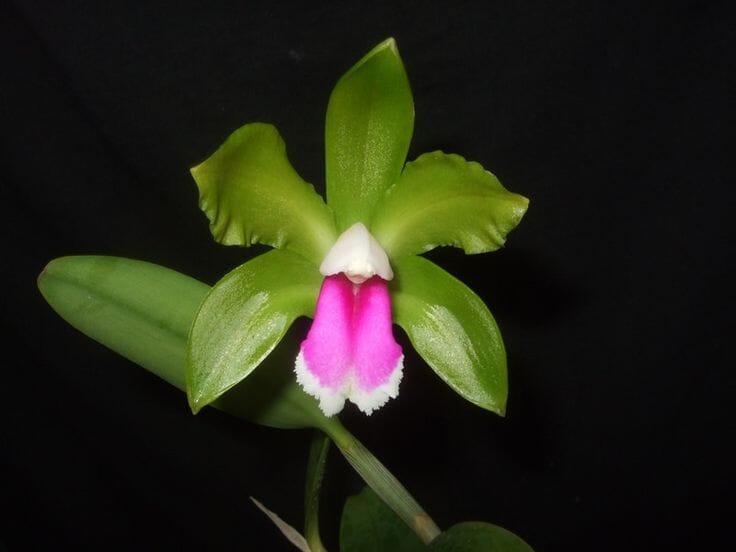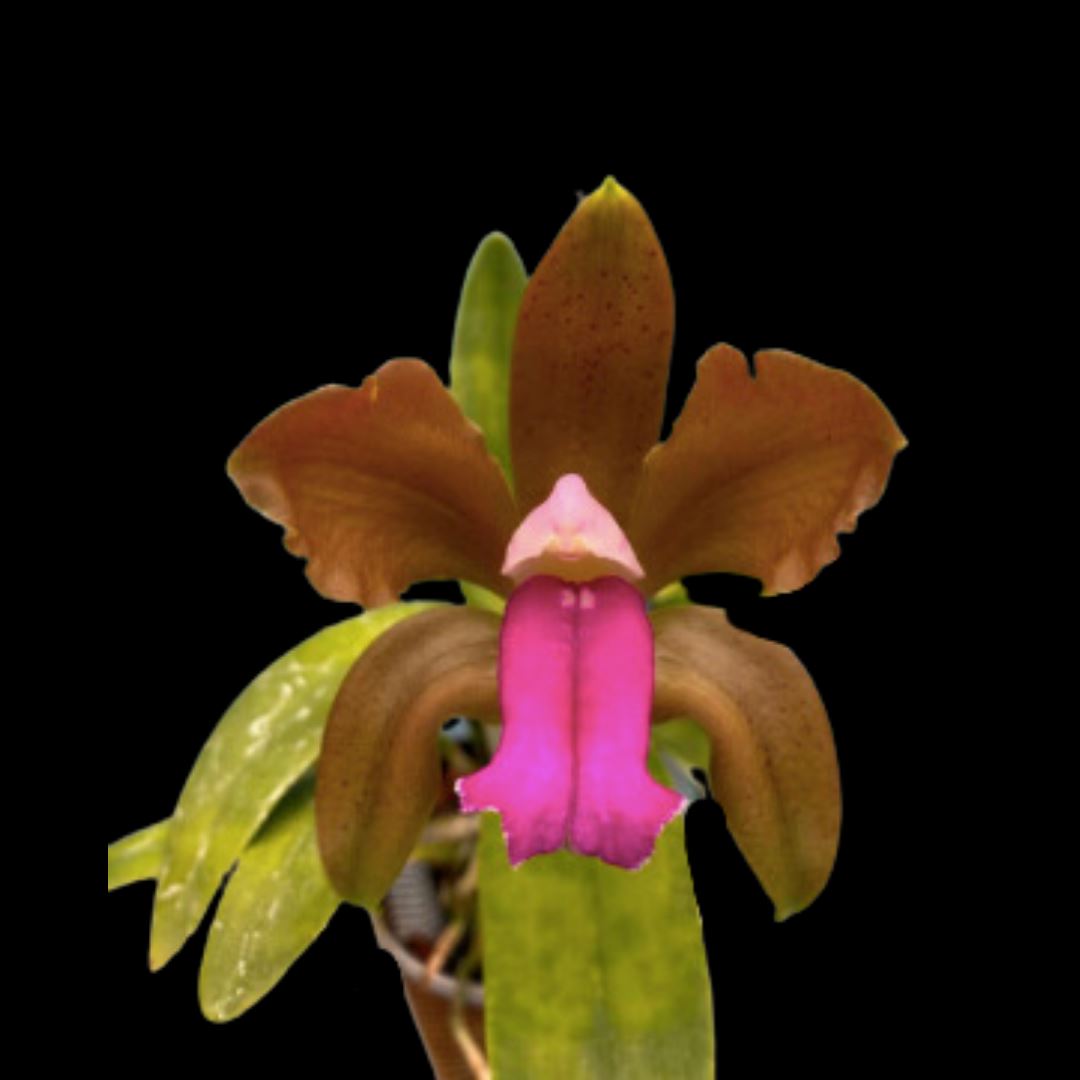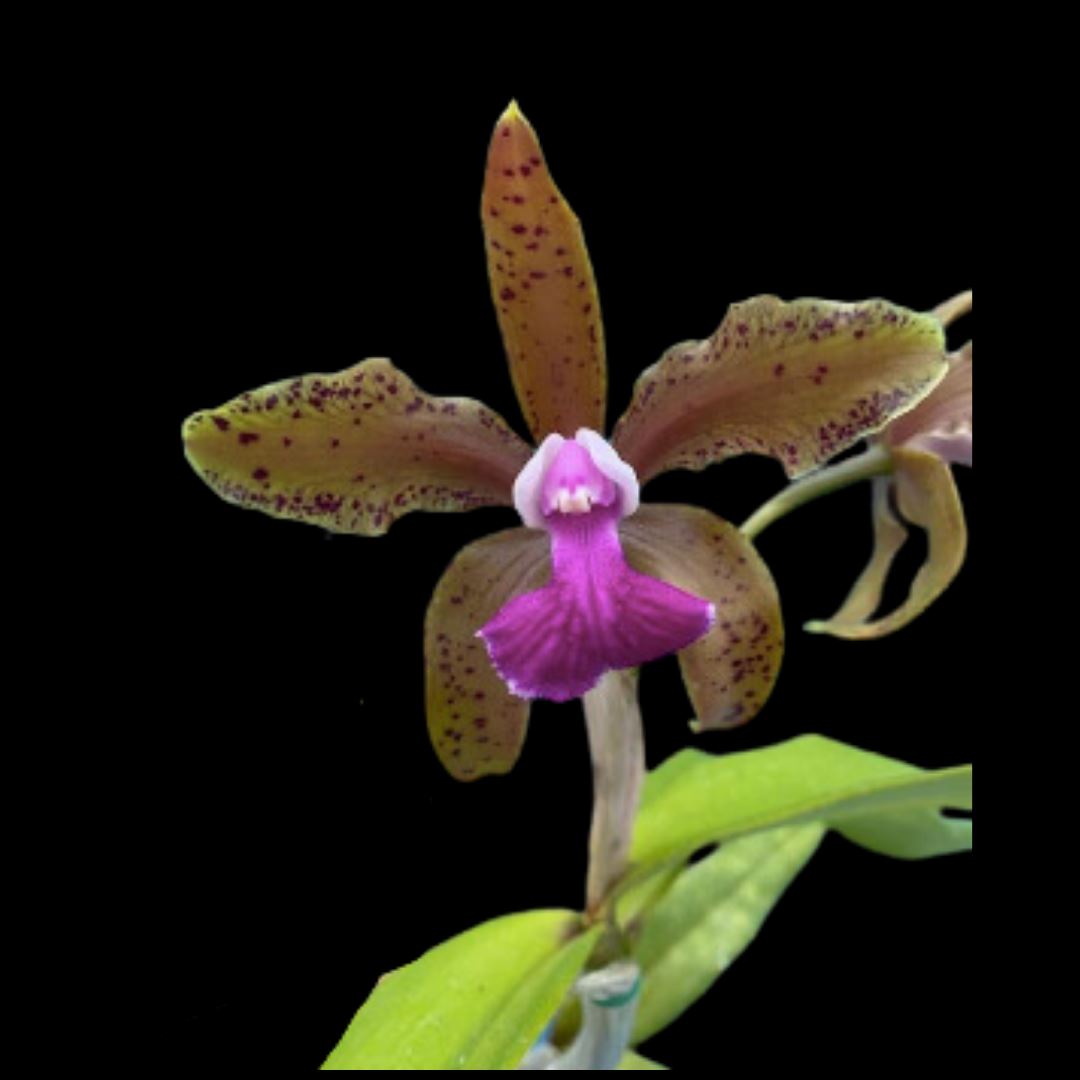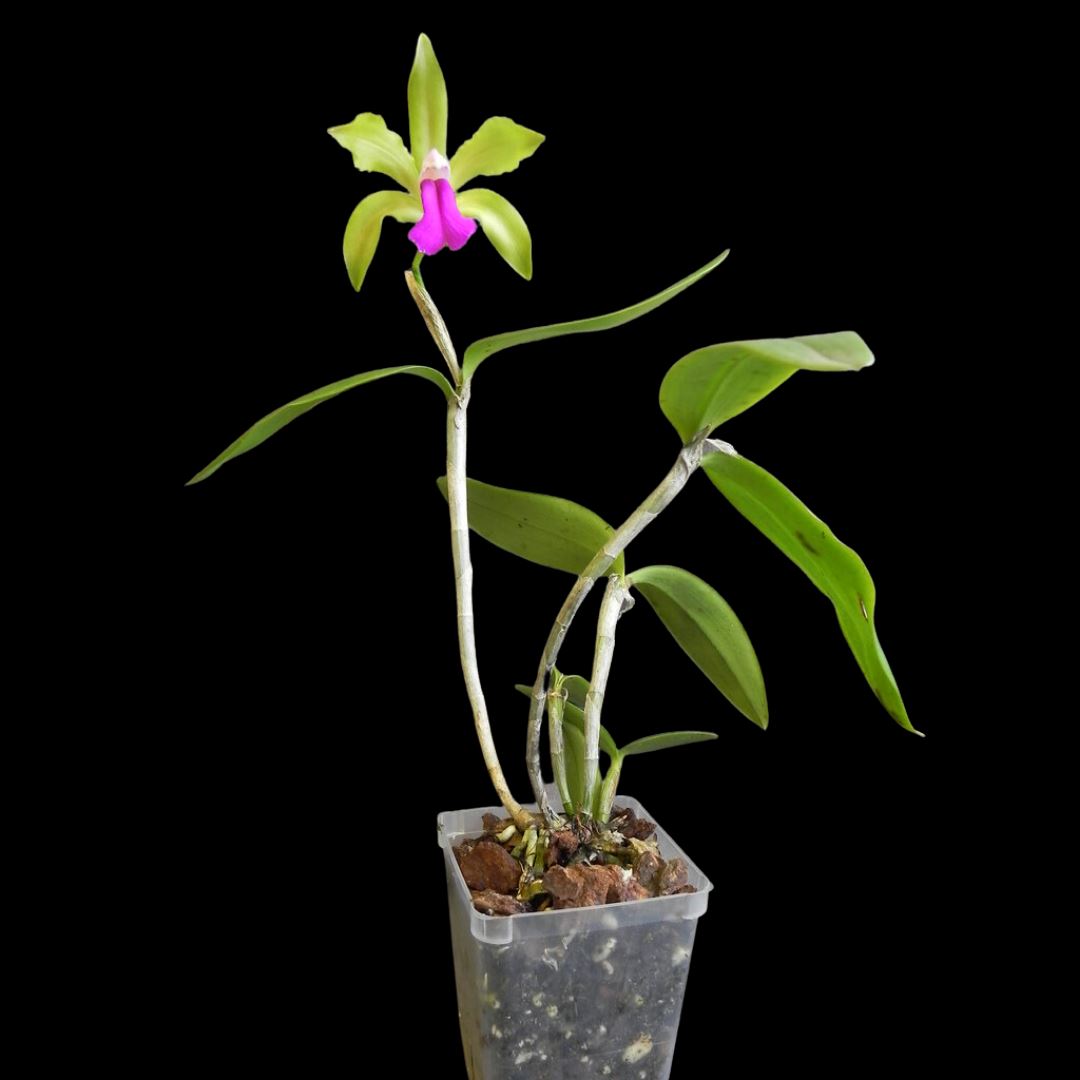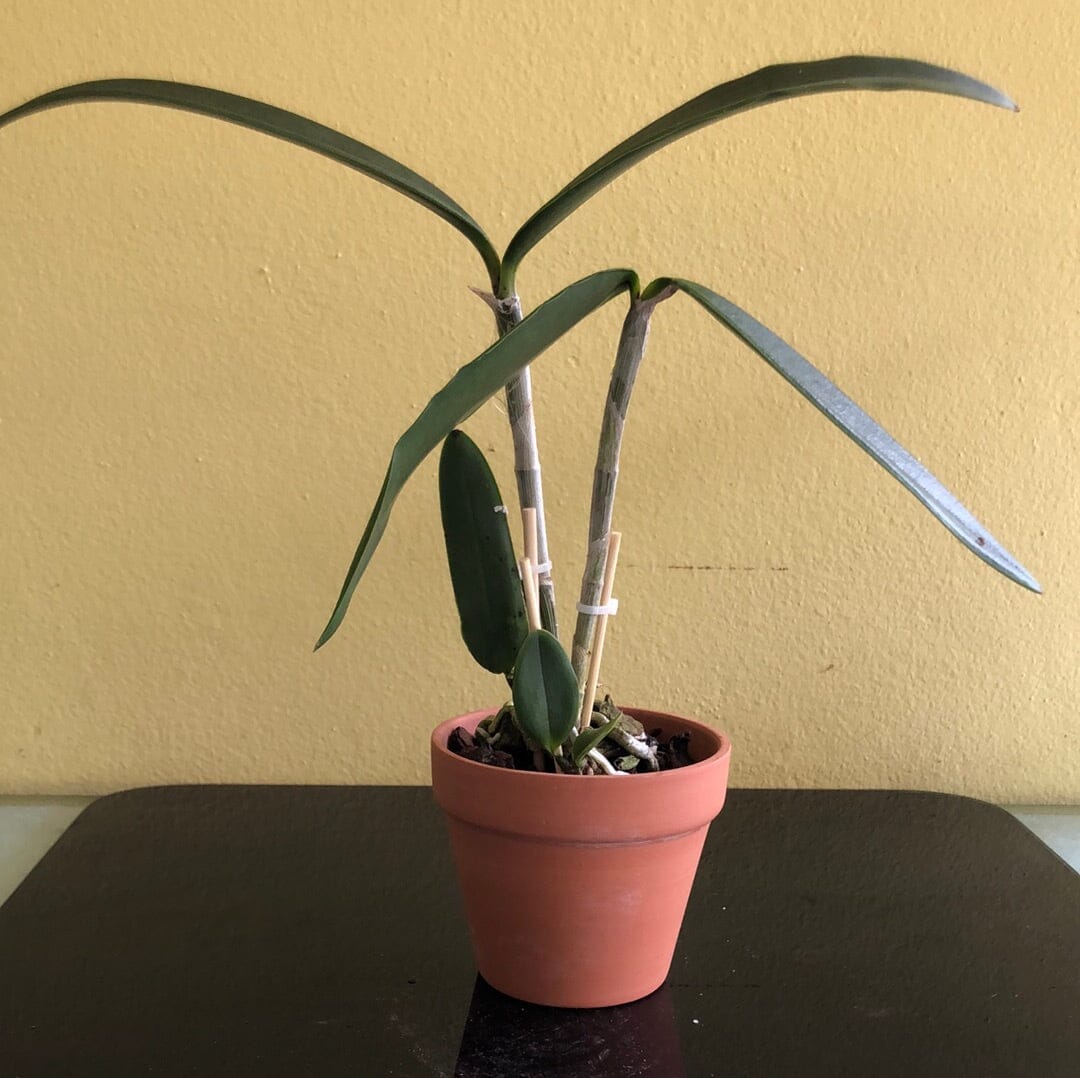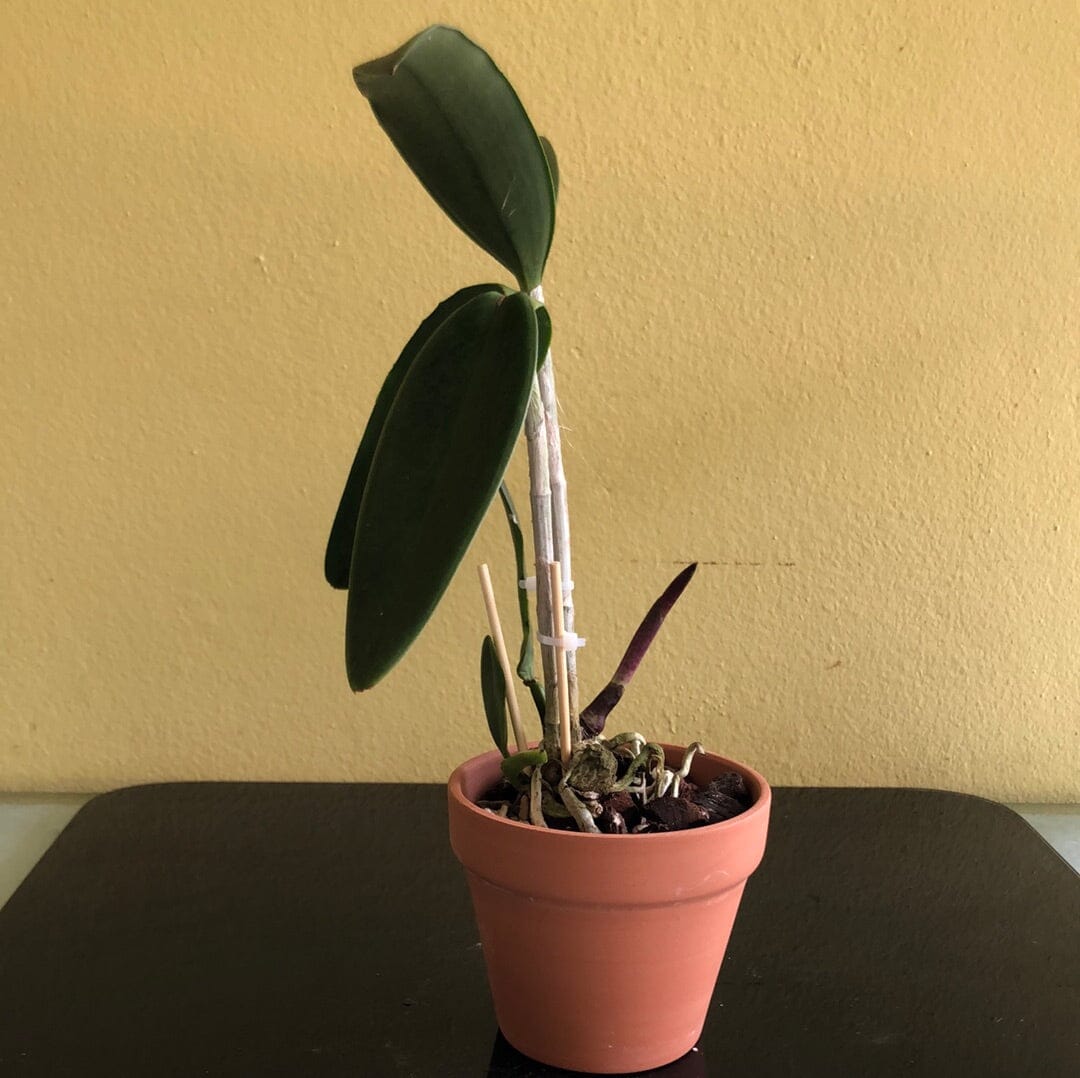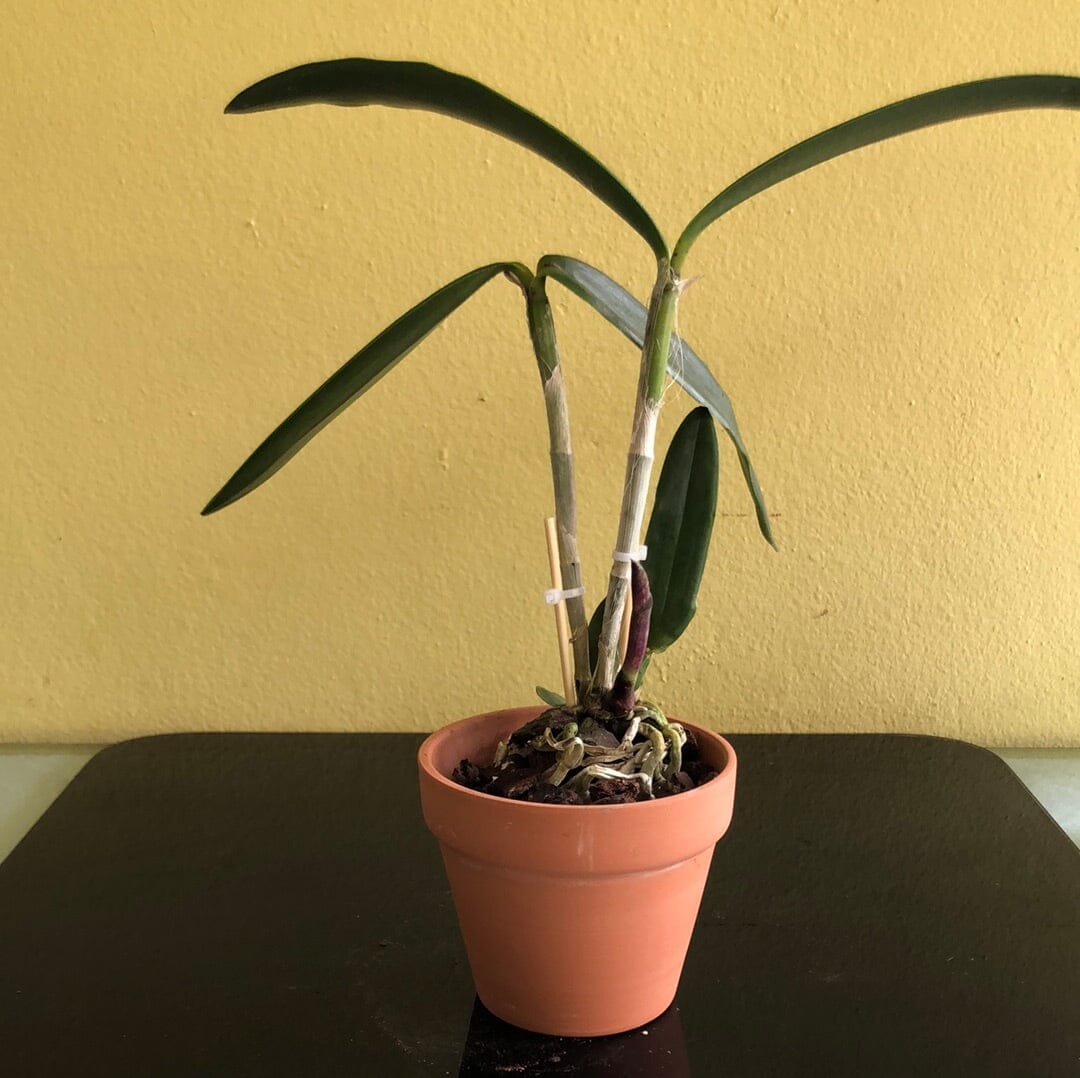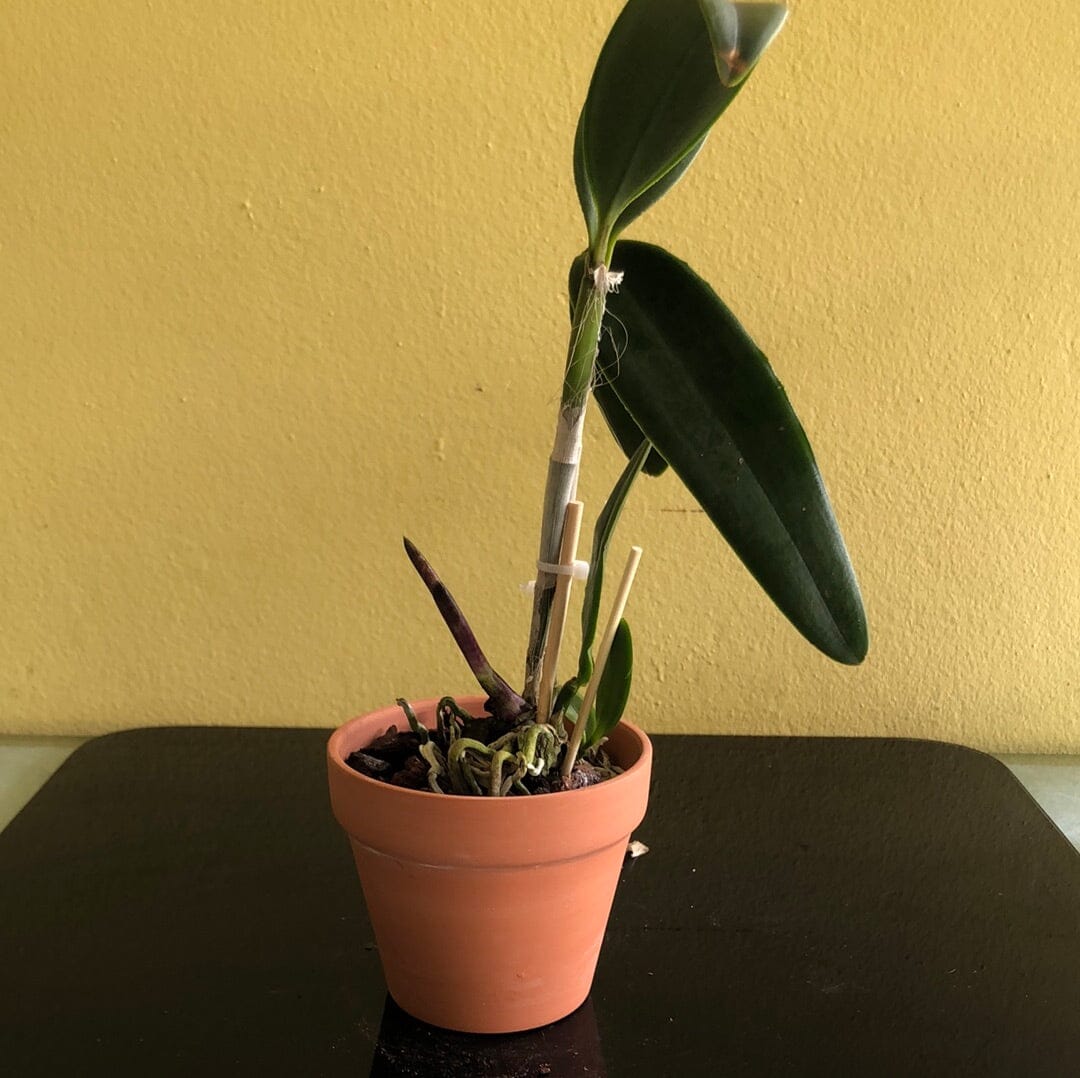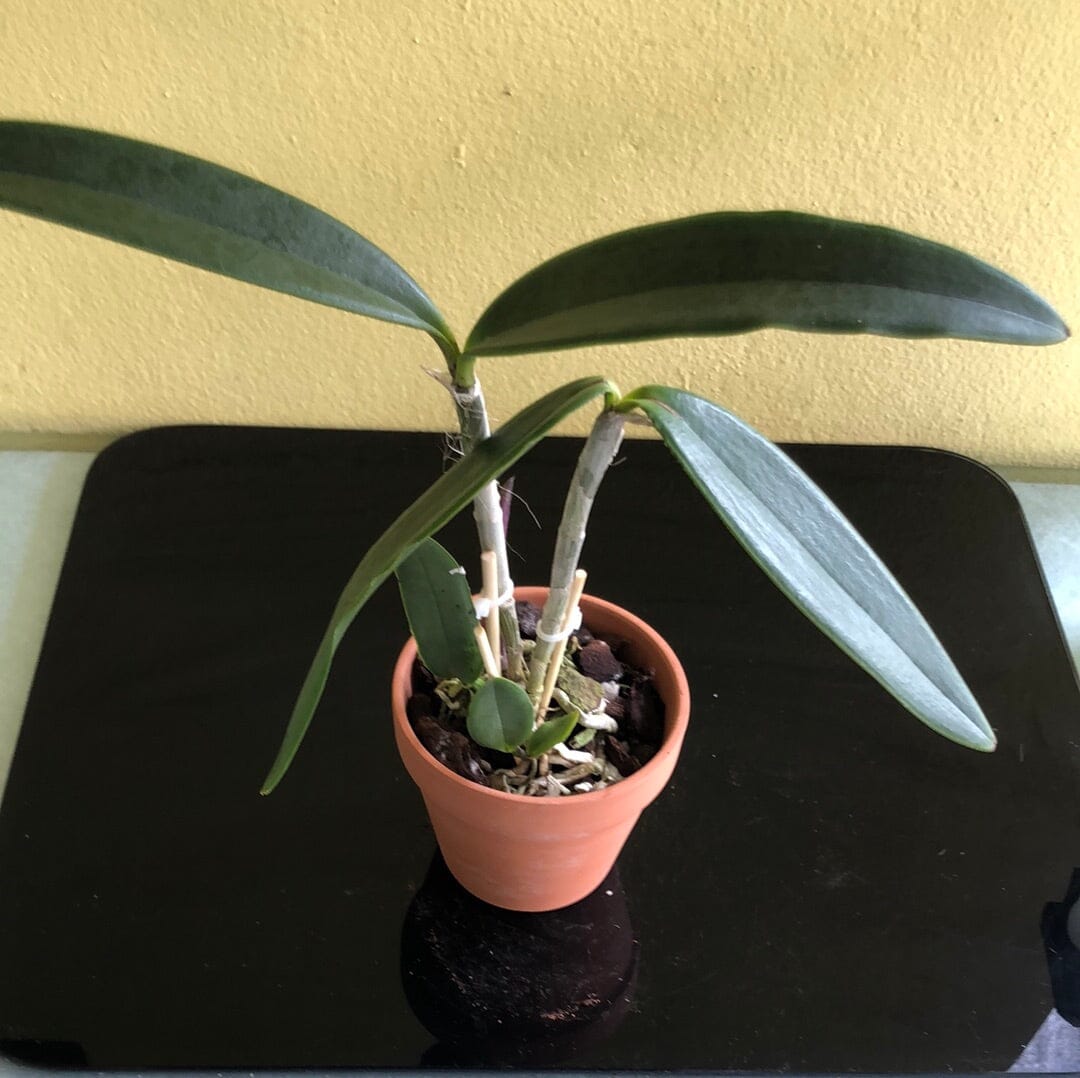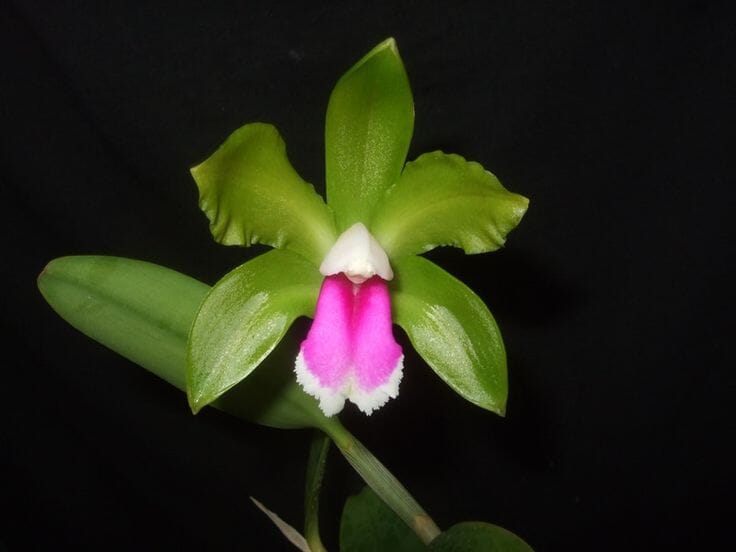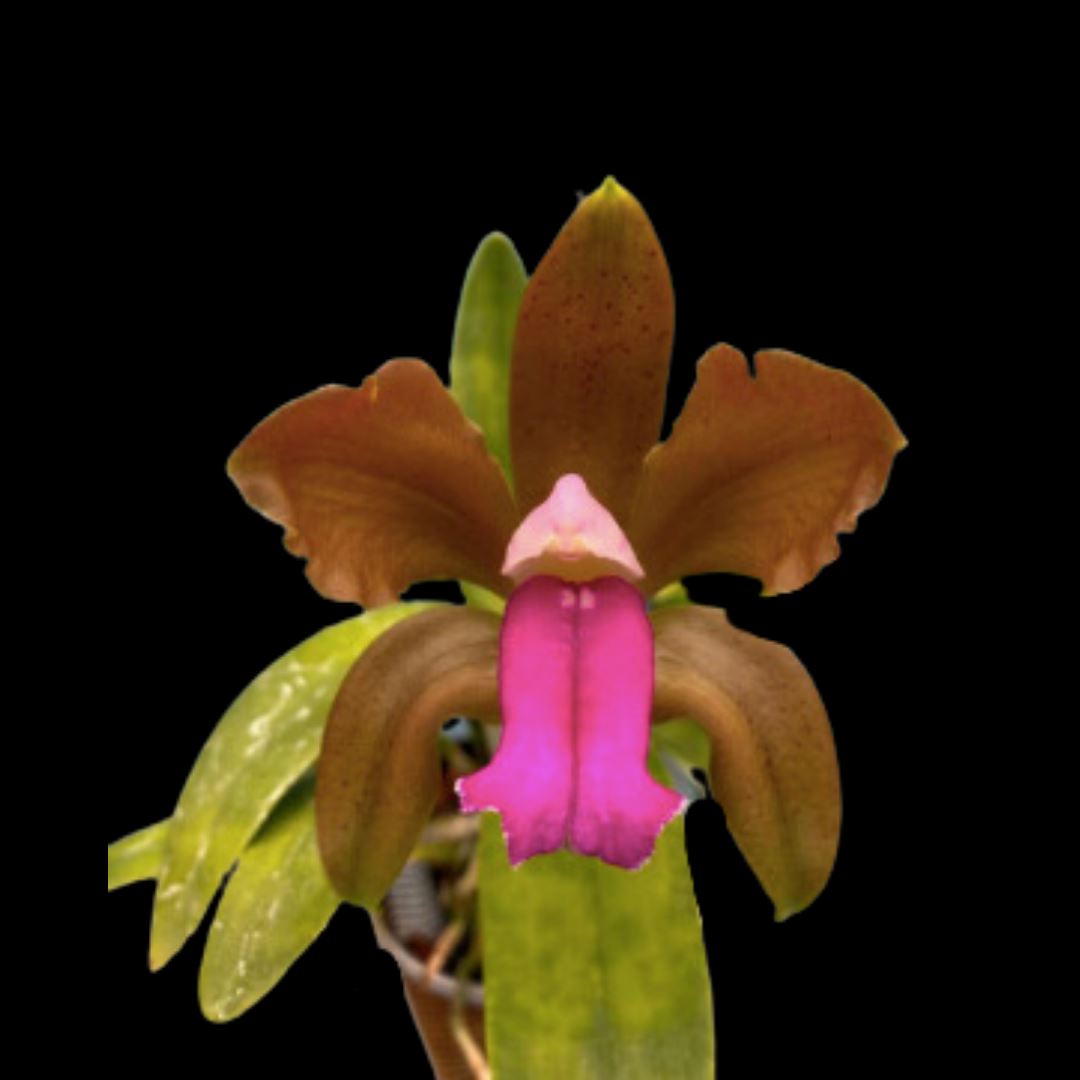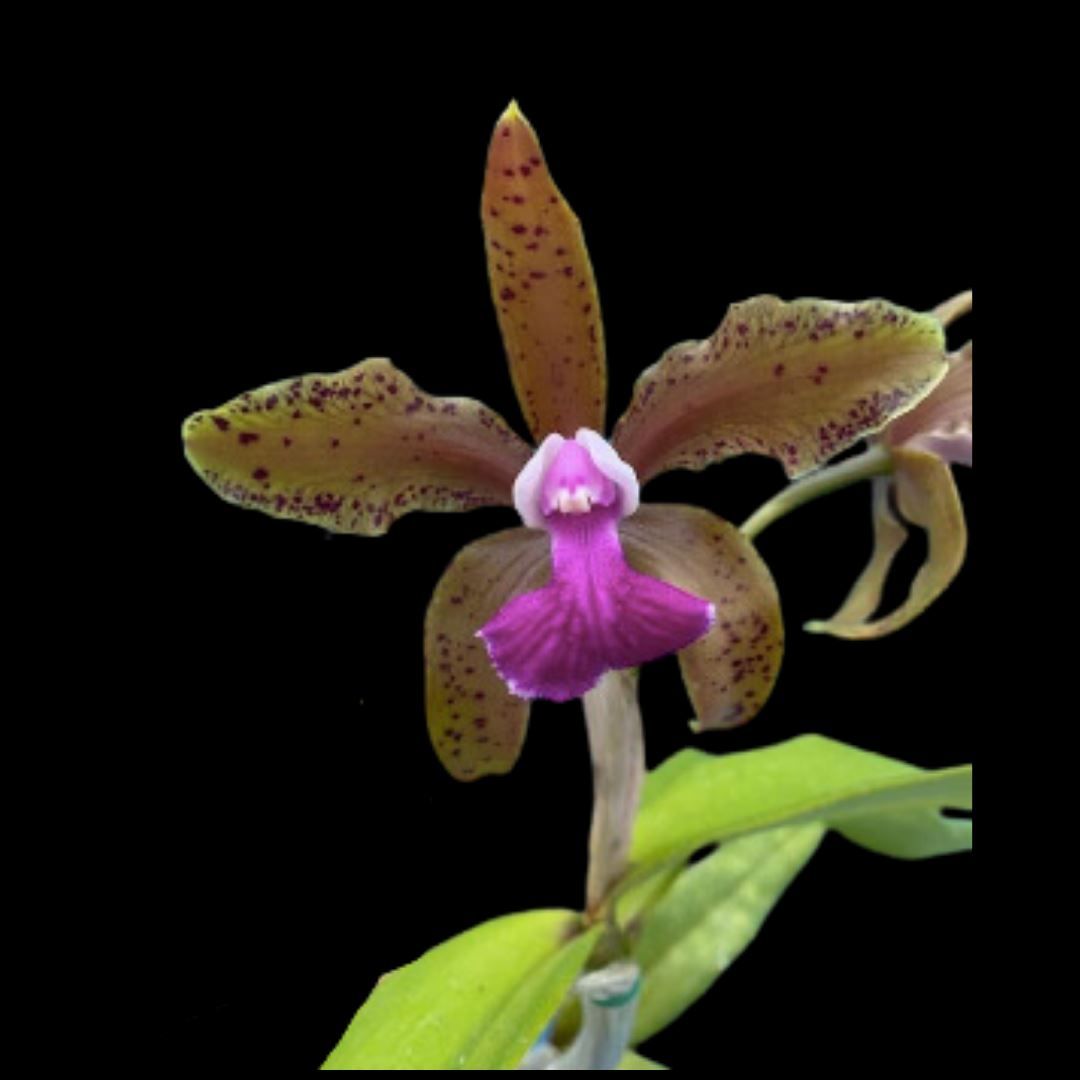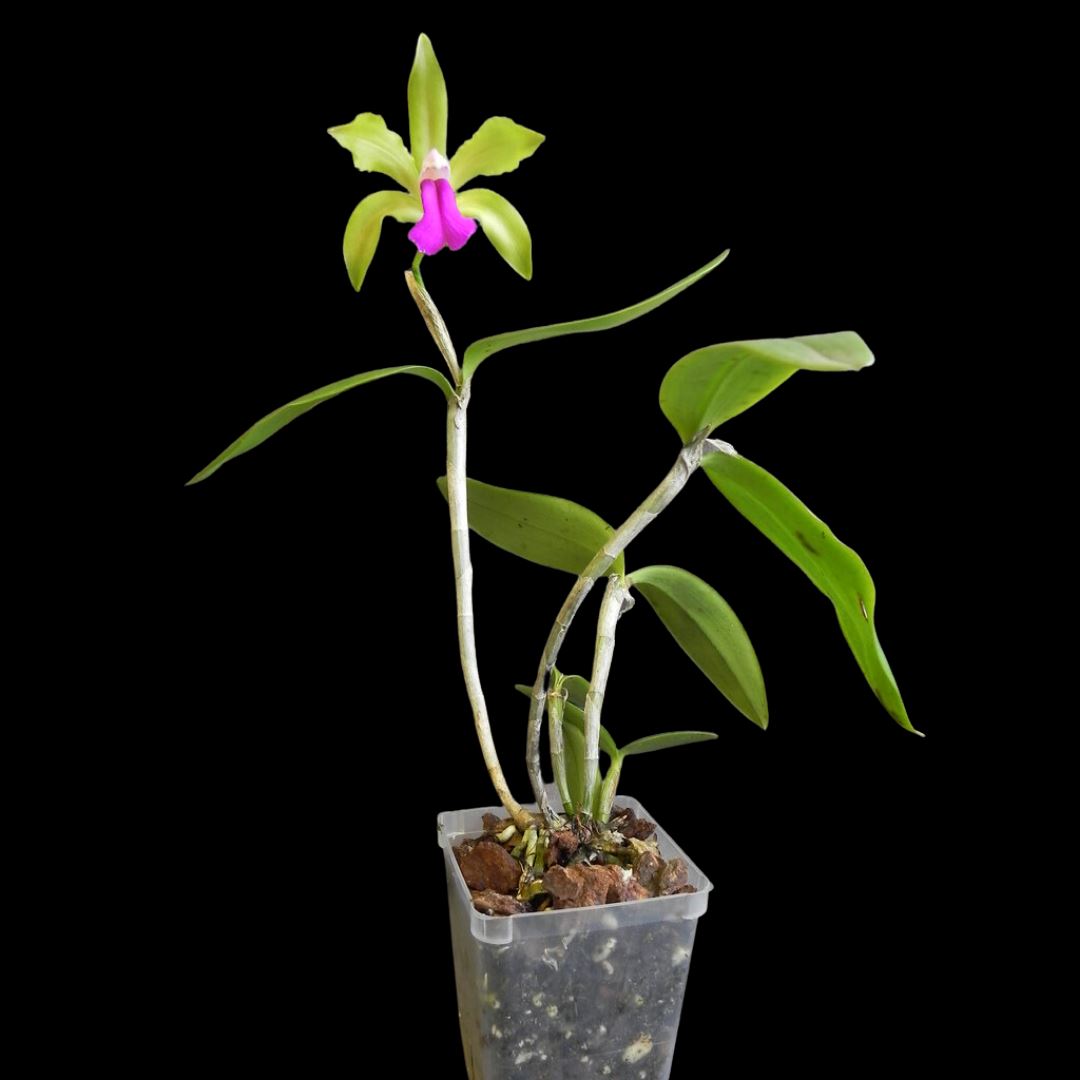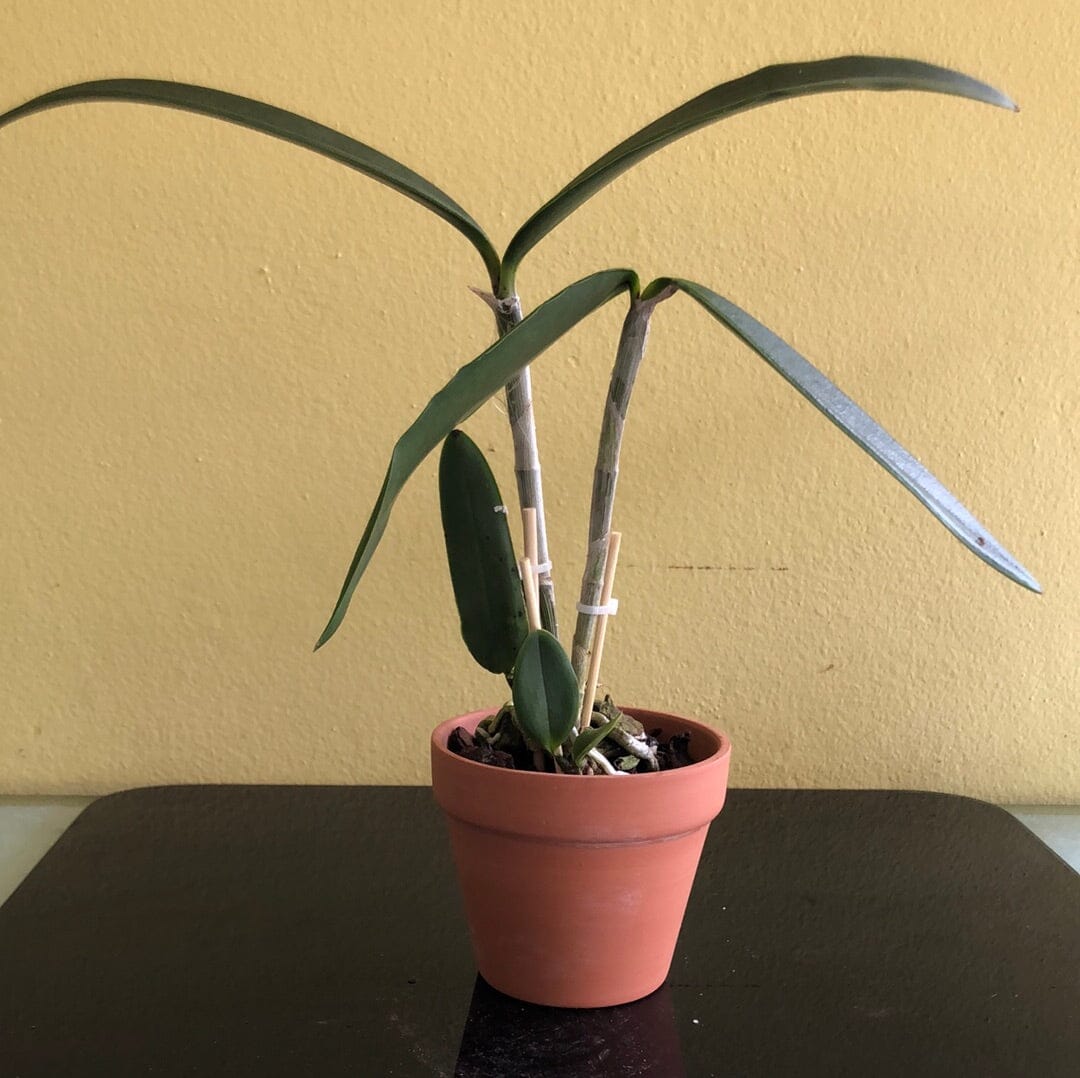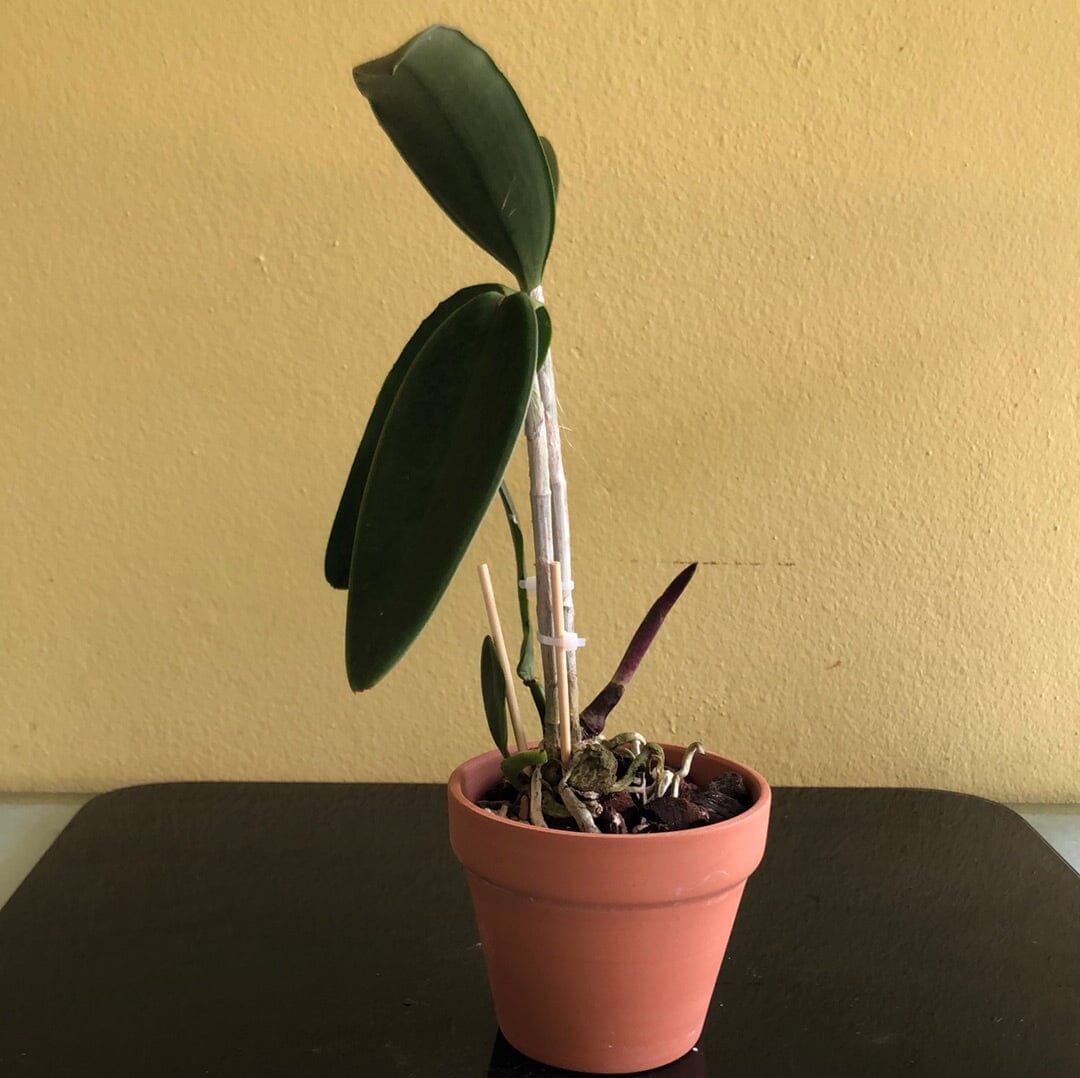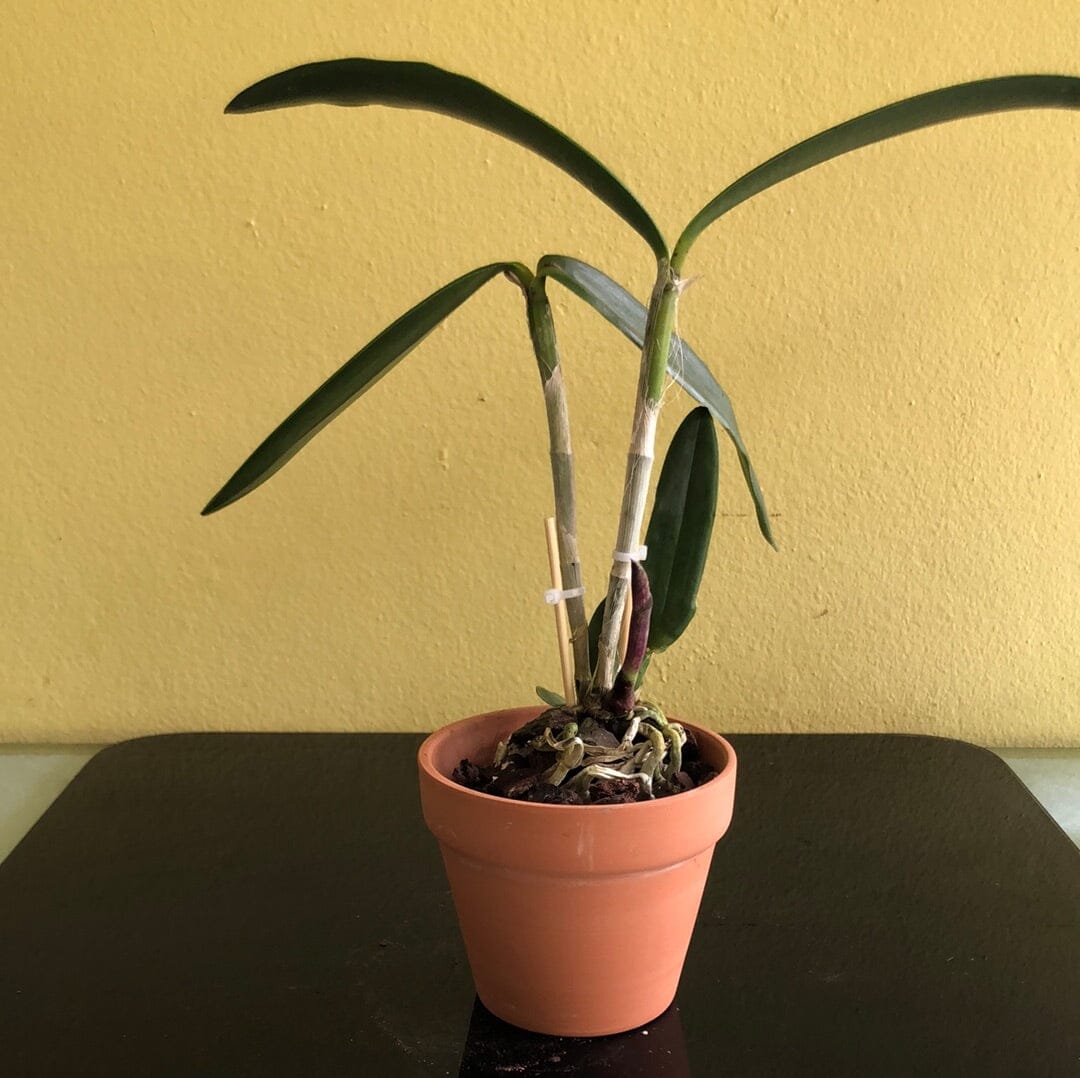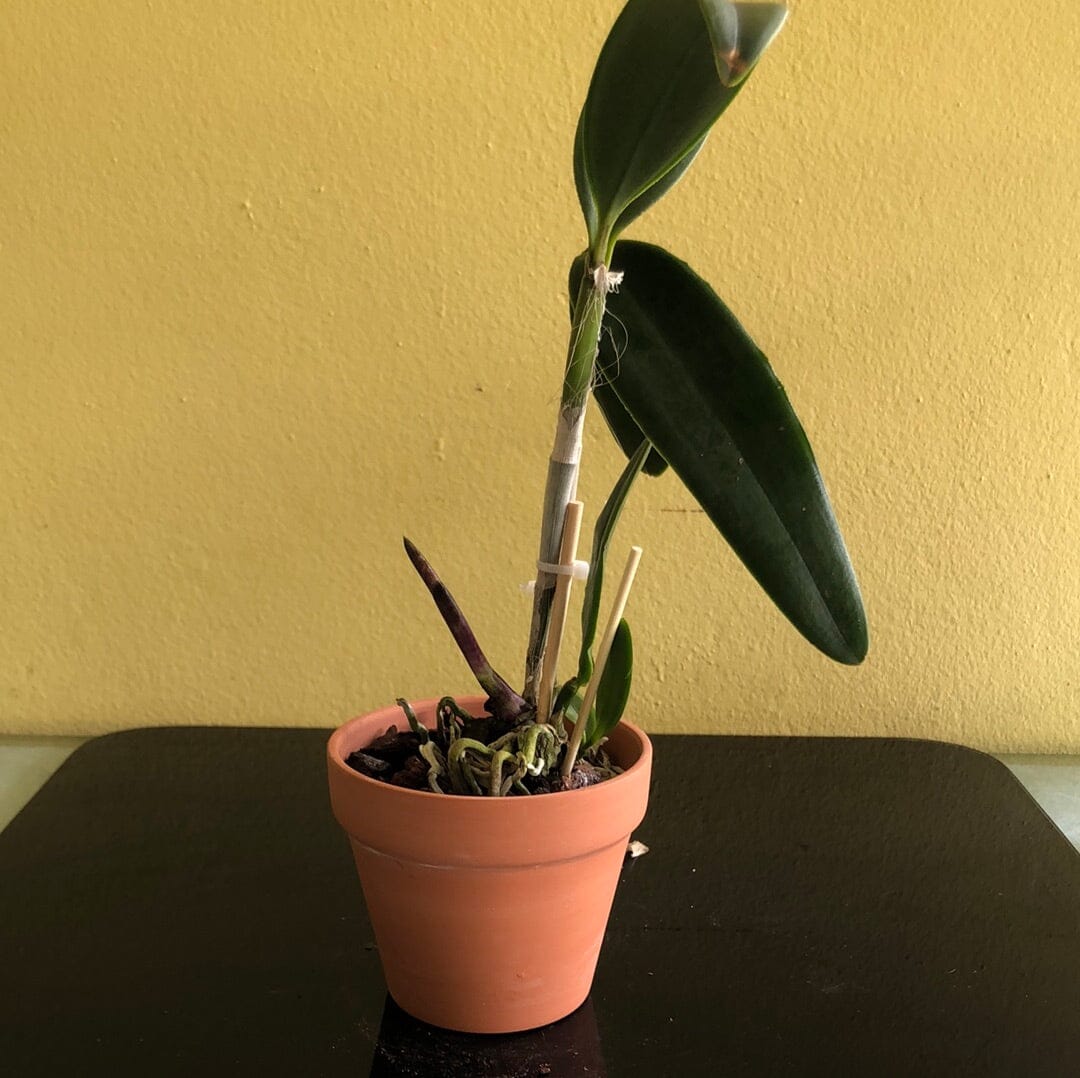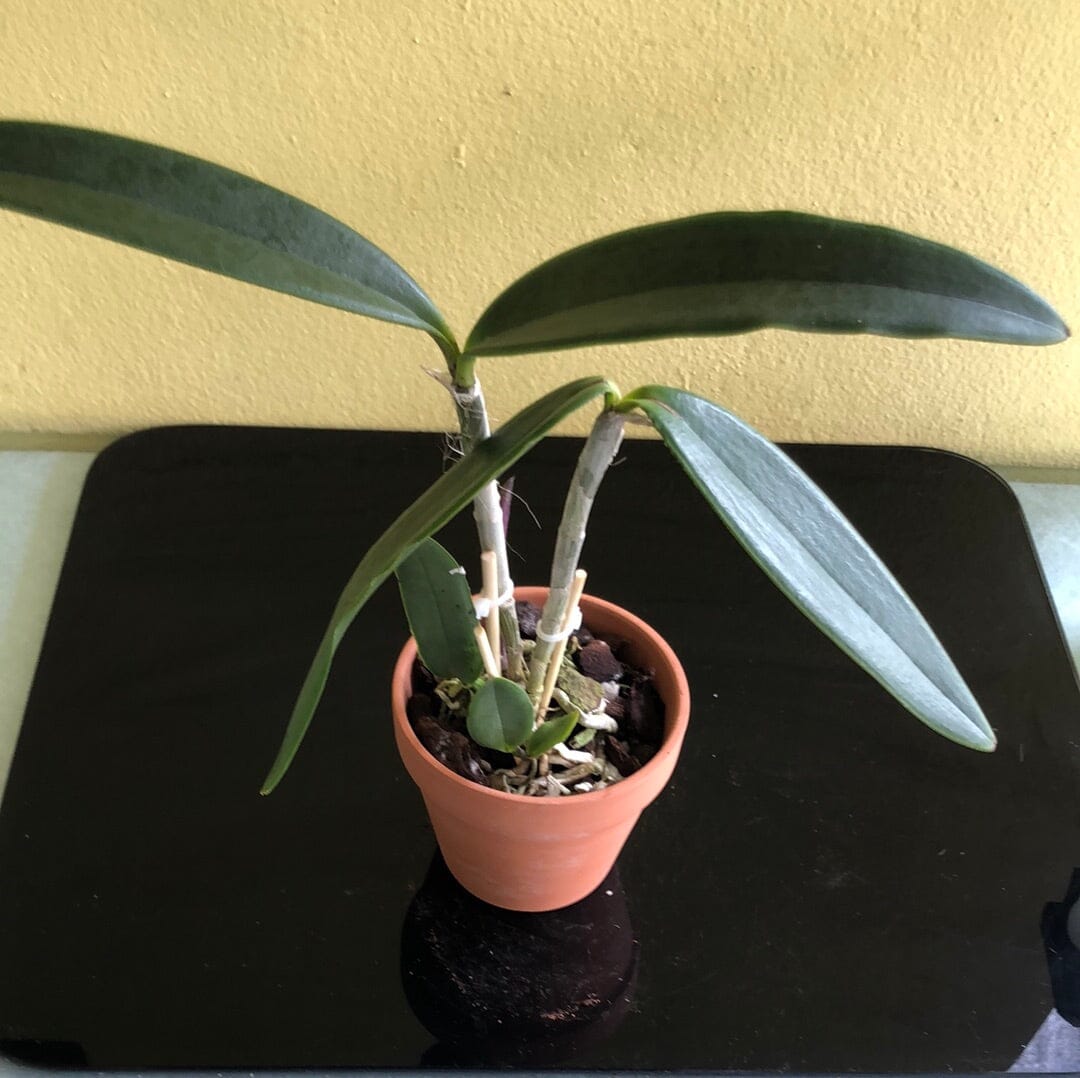La Foresta Orchids
Cattleya bicolor var. semi alba x var. dark tipo ‘Gabriel Amaru’
Cattleya bicolor var. semi alba x var. dark tipo ‘Gabriel Amaru’
Couldn't load pickup availability
Cattleya bicolor var. semi alba x ‘Gabriel Amaru’ dark tipo
Cattleya bicolor is an orchid found in Brazil. It grows both as an epiphyte on trees and as a lithophyte on rocks near water bodies at altitudes of 1000 to 1400 meters above sea level.
It is a medium to large sized orchid that grows in cool to warm temperatures. The orchid has long and slender, clustered, jointed, grooved pseudobulbs up to 75 cm long, with 2 apical leaves that are oblong-lorate, coriaceous, obtuse, and about 18 cm in length and 5 cm in width. It blooms in the spring and early summer, and occasionally again in the fall, producing a terminal, short, 1 to 7 flowered inflorescence that arises through a large basal sheath.
Cattleya bicolor the flower is heavy textured, highly fragrant, and long-lived, with a diameter of 7-9 cm and color ranging from green to olive. The petals are rhombus and egg-shaped, measuring 4 cm in length and 3 cm in width, and are wavy along the rim. The lip is spoon-shaped, with sides missing and color ranging from pink to carmine red. It measures 4 cm in length and 2 cm in width, with the sides sometimes bent backwards, and bright strokes present under the column. The inner part of the lip is white, while the front part is half-ellipse-shaped, with a lighter edge that is wavy and cut with a light fringe. The column is wide, arched, pink in color, and reaches up to 3 cm in length.
Cattleya bicolor prefers a high light intensity of up to 65000 lux without burning, but may acquire red-violet freckles or a yellowish shade of leaves and pseudobulbs. It is sufficient lighting that stimulates its flowering. It requires a moderately warm temperature regime, with a day temperature of 20-28°C and a night temperature of 16-20°C. For successful cultivation at home, the night temperature of the content should always be 4-6°C lower than the daytime temperature.
In its natural habitat, Cattleya bicolor thrives in relative humidity of the air rarely below 60%. In high humidity conditions, it is necessary to regularly ventilate the room where the plants are kept to avoid diseases.
Cattleya bicolor var. semi alba is grown in pots or on blocks, with massive clay pots recommended, and stones laid on the bottom for drainage and stability. A mixture of the bark of coniferous trees with sphagnum moss is recommended as a substrate, laid down in layers. Repotting is necessary only when required, such as in cases of severe salinization or condensation of the substrate, or when the plant grows too much and the pot becomes too small for it.
Watering frequency and abundance depend on the overall temperature of the content and intensity of illumination. Excess water during watering should flow freely out of the pot to avoid root decay and lower plant (rhizome) decay. During the period of active growth, Cattleya bicolor should be fertilized for every third watering in 1/2 of the fertilizer concentration indicated on the package.
Cattleya bicolor undergoes a winter period of rest, caused by a general decrease in the intensity of illumination and, as a result, cooling. The ideal temperature of the content in the home culture is 16-18 ° C in the daytime and 12-14 ° C at night. When choosing the watering mode, you need to focus on daytime temperatures. With the advent of new shoots, the rest period ends and the conditions of detention return to normal.
This is a blooming size in a 4” clay pot, about 1 to 2 years to bloom! Grown from Seed! Limited!

